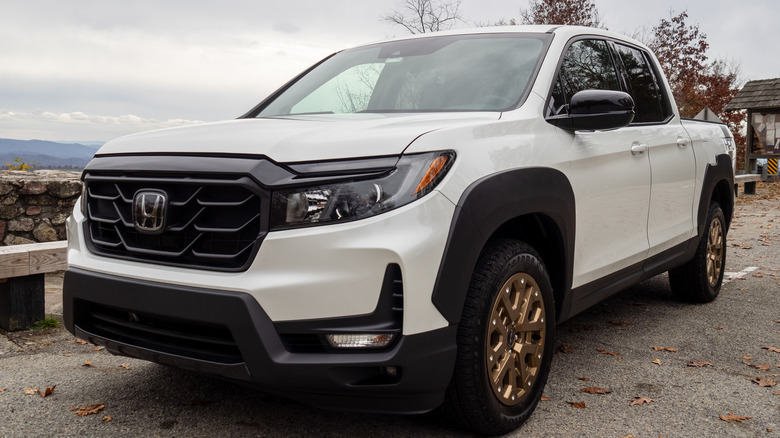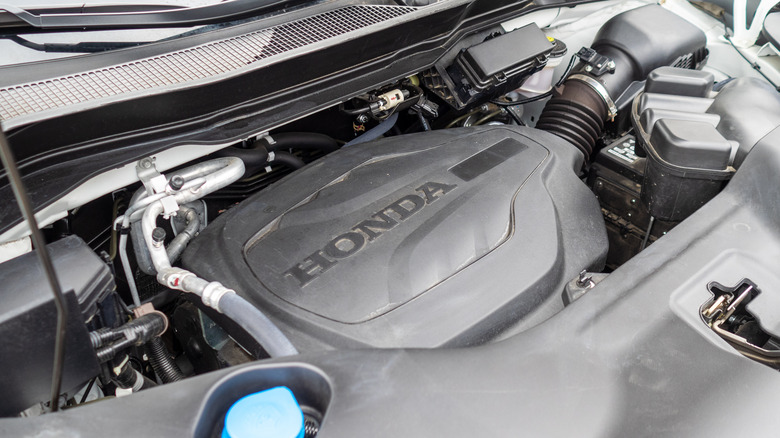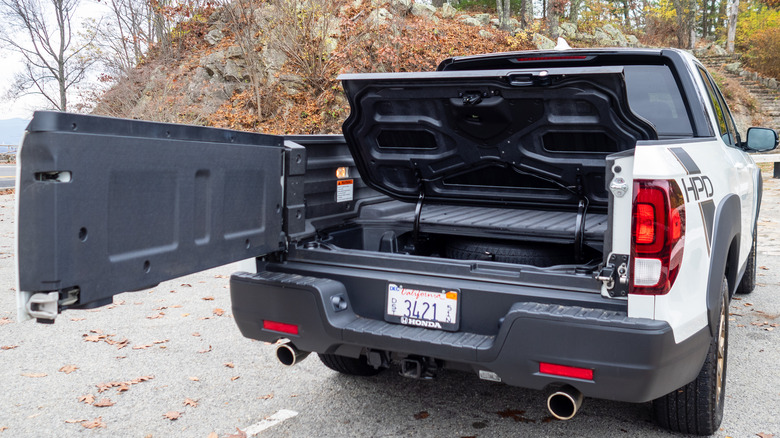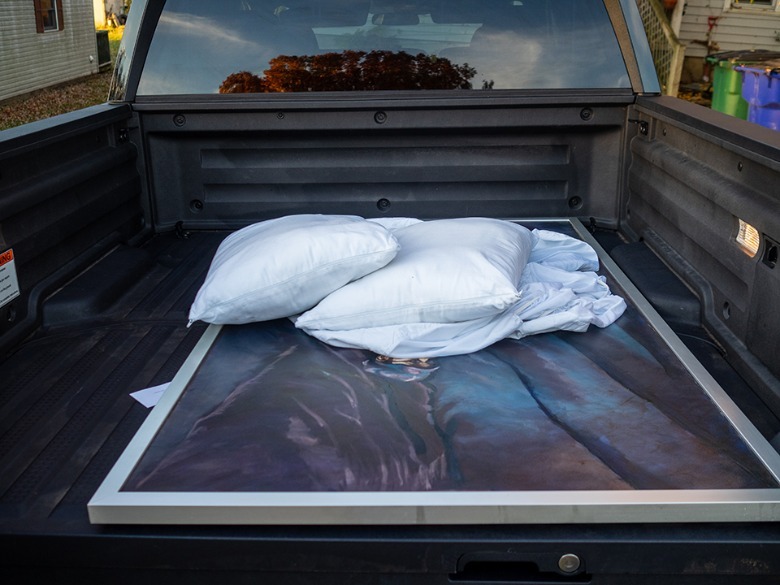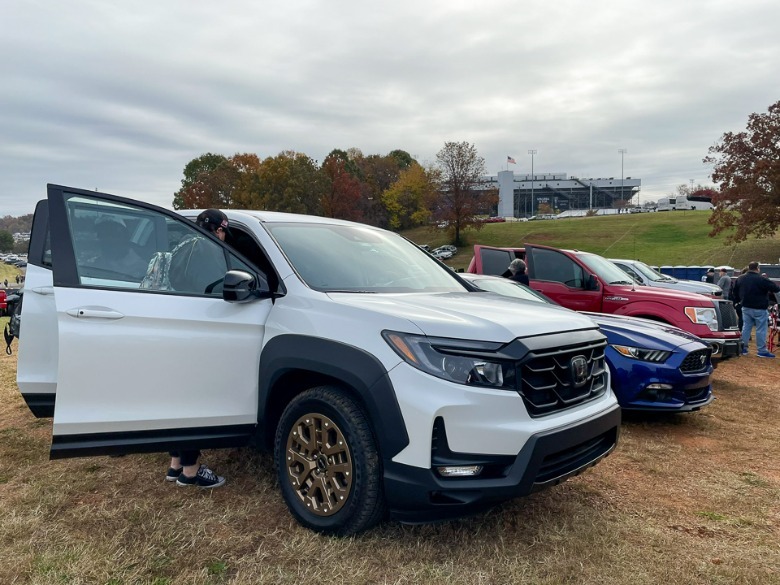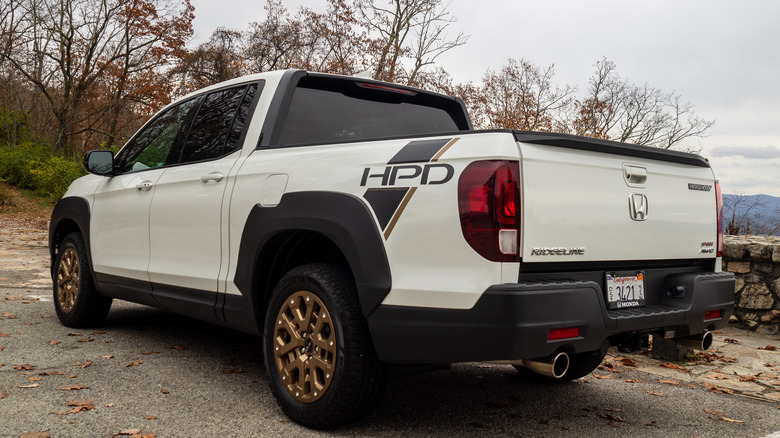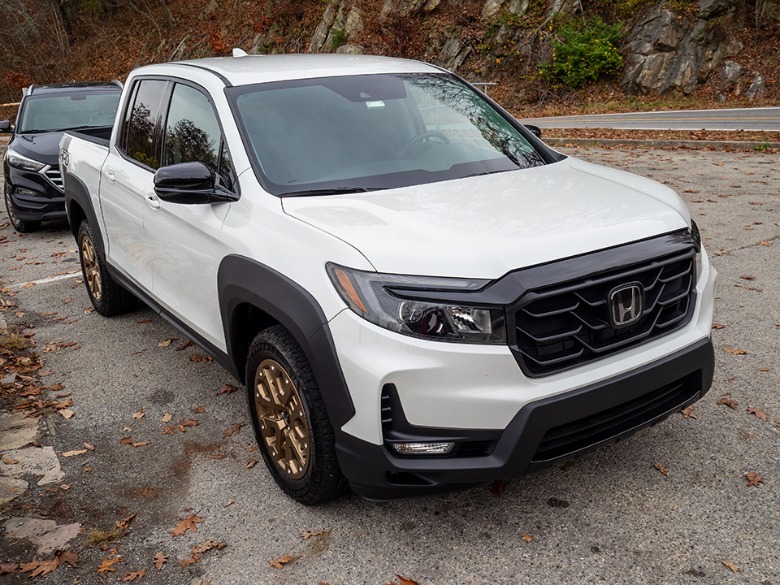Honda Ridgeline Sport Review: A Fine Truck In Need Of New Tech
- Handles curves and highways equally well
- In-bed trunk, folding split-rear bench lend tons of utility
- Comfortable seating front and rear
- HPD Package adds to rugged looks
- No head-up display
- 360 degree camera would help parking
- Dated infotainment system
- Navigation, SiriusXM and HD Radio limited to higher trims
You can never really predict when a major life change is going to roll into your driveway. When my grandmother was diagnosed with dementia recently and moved into long-term care, it proved to be the nudge to get me to move, too. That's just the sort of spontaneous turn of events that pickup owners love their trucks for, though rather than the usual Ford or Chevy it was to be the 2021 Honda Ridgeline Sport that helped me pack up and haul out.
Yes, a 2021 Ridgeline. That said, there isn't much difference between this Ridgeline Sport and one from the 2023 model year, Honda opting to tweak the colors but otherwise leave its SUV-inspired pickup well alone. That could be because it made its bigger changes already, adding some serious distance between what you see here and the first four model years of the second-generation midsize truck. It's not to say that there's no more room for improvement, mind, especially when it comes to technology.
A refresh for a re-envisioned Ridgeline
Introduced in 2016 for the 2017 model year, the second-generation Honda Ridgeline rides upon a modified version of the third-generation Honda Pilot platform. The three-bone frame and beefed-up C-pillar contribute to a tougher and lighter midsize unibody pickup compared to the first-generation Ridgeline. As with the previous generation truck, the mission for the second-generation Ridgeline isn't necessarily to steal consumers away from competitors like the Chevrolet Colorado, Ford Ranger, and Toyota Tacoma — though Honda wouldn't mind if such thievery did happen — but to give Honda and Acura fans a truck designed to keep their driveways and garages as Honda-only zones.
The 2020 and 2021 model years witnessed the greatest changes for the current Ridgeline. In 2020, the trim lineup fell from seven to four; the Sport replaced the RT as the base model. The in-house H6 six-speed automatic transmission was replaced by a ZF nine-speed unit in the same model year, and the Honda Sensing suite and eight-inch touchscreen were made standard on all remaining trims. For 2021, the Ridgeline received a facelift with new front fenders, a squared-off nose with an upright grille, brighter LED headlights, and a new rear bumper to accommodate the dual exhaust tips linked to the 3.5-liter V6.
The 2021 model year was also the first year for the Honda Performance Development Package – which the Ridgeline Sport I reviewed had – featuring rugged fender flares, 18-inch HPD alloy wheels in bronze, HPD decals and badging, and an HPD Package-specific grille.
Same power, more gears to stretch it all out
Since the start of the second-generation Ridgeline's reign on the showroom floor, just one engine has moved the front (until the 2021 model year) or all four wheels: the 3.5-liter J35Y6 first used in the 2015 Acura TLX; the engine also powered the third-generation Honda Pilot and continues to power the Honda Odyssey (2018 model year onward) and Passport (2019 model year onward). The 24-valve SOHC i-VTEC naturally aspirated V6 delivers 280 horsepower and 262 lb-ft. of torque to all four wheels via the aforementioned nine-speed ZF automatic and Honda's i-VTM4 all-wheel drive system. The aluminum alloy engine features variable displacement, dropping from six to three cylinders for fuel savings; start-stop tech also contributes to the fuel-saving equation.
Originally, a six-speed automatic built by Honda occupied the space between the V6 and where the power wound up. For 2020, Honda handed the reins over to ZF, whose 9HP48 nine-speed automatic was already moving the power around in the Passport, Pilot, and Odyssey, as well as the Acura TLX and non-hybrid 2016-2020 MDX models. The intent was to improve fuel economy, though the result, as noted by Autoblog back in 2019, was just a gain of 1 mpg in the city, a loss of 1 mpg on the highway. But at least those 280 horses have more room to stretch out over the power band, right?
Keep your phone handy
Seated behind the V6, the 2021 Honda Ridgeline is all about the buttons and knobs. No haptic feedback like the Hyundai Santa Cruz, the closest truck (though compact) to the Ridgeline's unibody spirit. Just plenty of things to push and twist all throughout the dash and steering wheel. Of course, I found some controls to not be as intuitive as others; specifically, the cruise control. For a couple of days, I didn't know you had to first push the "Main" button above the cruise control controls on the right side of the steering wheel in order to use the cruise control at all. There's also no HUD available on any of the four trims even in 2023, though that's nothing compared to the main detraction: the infotainment system.
Over this past year, I've experienced the new infotainment systems Honda has for the 2023 HR-V and CR-V Hybrid. The new system is miles away from what's inside the 2021 to present Ridgeline. Aside from looking like systems from the previous decade (which it is), SiriusXM wasn't available on the 2021 Sport trim, and isn't available on the Sport trim even into the 2023 model year; the RTL-E trim on up has SiriusXM and HD Radio. There's also no OEM navigation available on the Sport trim level, a glaring omission inexcusable going into the fourth model year of the 2020s.
Utility for days
While the tech side of the 2021 Honda Ridgeline falls short of the mark, its purpose as a truck hits the bullseye. I don't know of any other truck today that has the kind of utility the Ridgeline possesses. The dual-opening tailgate makes loading and unloading a breeze, one bested only by the Ram's split tailgate that opens three ways. What the Ram (or any other modern truck of any size, for that matter) doesn't have is an in-bed trunk, which protects the spare tire and tire-changing tools from the elements, along with anything you want to keep dry. If you opt to use the trunk at a tailgate, though, there is a handy drain on the left side to make emptying the melted ice easy like Sunday.
As for the bed itself, it can hold up to nearly 1,600 pounds of payload, while the 60/40 rear bench in the cabin will fold up for more flexibility. A hard folding bed cover is available on all trims for $1,175. I was lucky I didn't need to rent a trailer to take care of all the moving, though if I needed a trailer, the Ridgeline can tow up to 5,000 pounds. That places it squarely against the Honda Santa Cruz, though also leaves it bested by all of the other trucks in the Ridgeline's own class.
The highest of highs, the lowest of lows
Two things were planned with the 2021 Honda Ridgeline Sport: first, move out of my old place into my mom's house, and second, take a couple of NASCAR Twitter pals of mine down to Martinsville Speedway in Ridgeway, Virginia, just 90 minutes or so away from home. What wasn't planned was, on my first day with the keys, the engine simply refusing to turn-over. Faced with a bunch of Christmas lights across the gauge cluster, the tow truck driver had to jump the battery to turn load it onto the flatbed.
A day later, the local Honda dealer's service techs found the cause, and just as the tow truck operator had predicted it was the battery to blame. Nothing like losing a day of moving to something that could've been replaced in my (now former) landlord's driveway in minutes.
Sunday morning, my NASCAR Twitter friends arrived at my mom's house. They then hopped into the Ridgeline Sport with me for the southbound journey to Martinsville. The route south featured lots of twists and turns along the way, giving the truck the chance to show off all it learned from Honda's own motorsports programs. In short, it rode and drove like a dream. My friends also enjoyed the cloth seating, noting how comfortable it was, even in the back. The ride back home on the highways felt just as good, the 280 horses moving all three of us along with little issue.
A fine truck, though others are finer
After a week with the Honda Ridgeline Sport, what stands out is how well this truck does at what it's meant to do. It helped me move out of the old place, including bringing a ton of items for recycling to the big recycling outposts in and around town, as well as drop off a few items at my mom's storage locker near her home. Every space available in the bed and the rear section of the cab was put into service, making the move as easy as it could be with just me, myself and I loading and unloading everything everywhere. The trip to my first-ever NASCAR race was just as wonderful in the Ridgeline, too, especially with a couple of friends along for the ride. All of the truck things you might need, handled with no complaint.
There are a few dings, though, and I'm not including the impromptu tow. The biggest is the aging tech and the lack of features a truck like this should have, especially as we look ahead to 2023. The absence of a front camera, as well as side cameras, made parking a challenge. The navigation omission in the base Sport trim is absurd, too. The EPA estimate for the Honda Ridgeline Sport is 18 city, 24 highway, 21 combined. On the loop to and from Draper Valley Overlook in Pulaski County, Virginia, I managed an average of 27 mpg, though I burned through three-quarters of a tank over the move and the visit to Martinsville Speedway, which took a total of $50 to bring the 19.5-gallon fuel tank to full.
Starting price for the 2023 Honda Ridgeline Sport is $38,140. The Platinum White paint and HPD Package, plus destination and handling, bring the total sticker for our review model to $40,860. Unless you're a Honda/Acura fan — and maybe even then — that may be a hard pill to swallow. For about the same money, one can buy a well-equipped Hyundai Santa Cruz SEL (starting at $36,130) or a Ford Maverick Lariat (starting at $27,995 for the hybrid model), though only the former can tow as much as the Ridgeline. Perhaps with the new fourth-generation Pilot coming to showrooms soon, a third-generation Ridgeline could rectify all the tech limitations and then some.
